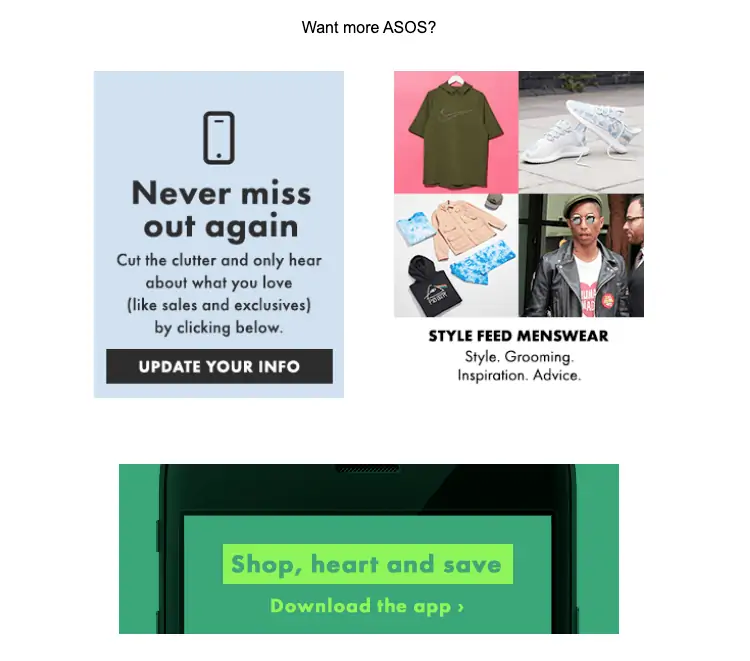Even if you think your email marketing campaigns are successful and they’re delivering great results, it can always pay to keep an eye on what your competitors are doing.
In this article, with help from Dan Barker, we’ll look at some clever ways of checking out competitors’ email marketing, and some key aspects to look for.
Subscribe to your competitors’ emails
This is the best place to start. Identify your key competitors and subscribe to their email newsletters.
Create a dedicated inbox so you have an automated archive – this way you can see the other offers, content and promotions that some of your target customers are receiving.
See what post-purchase emails look like
It can also be an idea to make test purchases so you can see how they handle things like conformation and post purchase emails as well.
This allows you to see your rival from the customer’s point of view, and provides insight into how they follow up on the first purchase.
Analysing order confirmation emails can give you some ideas. Here, for example, ASOS uses this email to encourage customers to update their profile and provide more useful information and promotes its mobile app.

You can also see how often they follow up, and how they use customer data to tailor emails to individual customers or segments.
Review competitors’ landing pages
It’s useful to click a few calls to action from rivals’ emails and check out their landing page design.
Are your competitors using specific landing pages for campaigns? Are they sending email recipients to product pages?
It can be useful to look at the link between competitors’ emails and landing pages. Does the landing page follow up and match the email content? Do the visuals follow on?
The key here is to see where their landing pages may differ from yours, and how they help the shopper.
Here, for example, Schuh advertises its Spring sale in an email, with several different calls to action.
Clicking on the ‘20% off’ sale takes users straight to this sales page. The text reinforces the promise of the email, and shoppeers are sent to a page where they can quickly start shopping.
Note that the email offers other calls to action, by brand for example, shoppers can start to narrow their choice straight from the email. This save user’s effort and makes it more likely they will find relevant products in the sale.
See how often competitors are sending emails
For marketers, finding the right email frequency can be tricky. If you ask consumers, they’ll often say they receive too many emails, but this doesn’t mean sending more doesn;t work sometimes.
Sending more email can produce results, especially at times of peak consumer interest, around Christmas for example. However, you can’t keep sending more and more emails as there’s a point when returns will diminish and you’ll risk annoying subscribers.
This last point is important as, if customers start reporting your emails as spam then this can affect your sender reputation with ISPs.
It can be helpful to check what your competitors are doing in this area. If they’re sending emails more frequently, or perhaps using different timings or days, then do they know something you don’t?
These are all areas where you can potentially experiment and improve your own results.
Get ahead of rivals on promotions
Knowing about the patterns of sending from your competitors means you can potentially use this information to your own advantage.
For example, a direct competitor may have a predictable pattern of sending promotions at particular dates and times, or perhaps starting key seasonal campsites on a certain day.
Using this knowledge you can potentially steal a march on these competitors by sending your promotions ahead of theirs, In many cases your email list will have some overlap with rivals, so this can be very effective.
Check email campaign trends from rivals
Learning from long term trends in email marketing from your rivals can also be very useful.
You don’t even need to have subscribed to their emails for this, as there are some useful resources that can help here. For example, Milled.com contains emails from lots of brands, all sorted by date.
Using tools like this, or your own archive of competitor emails, you can see what they were up to the previous year. For example, you could look to see when they started Spring sales, or began to ramp up Blak Friday email campaigns.
In this example from M&S, we can learn that they began their 2019 sale around March 12, with previews and VIP access a few days before that. We can see that it started at 40% off, how many emails were sent, and how long the campaign lasted.
That’s a lot of potentially useful information from a few emails, and can help you to determine the length of your own campaign, or to get ahead by starting yours earlier.
In Summary
Your own email marketing may be very effective, but there’s always something you can learn from your competitors.
Competitor analysis on rivals’ email marketing is easy to do, and there’s a lot of useful information to be extracted if you know what to look for.
